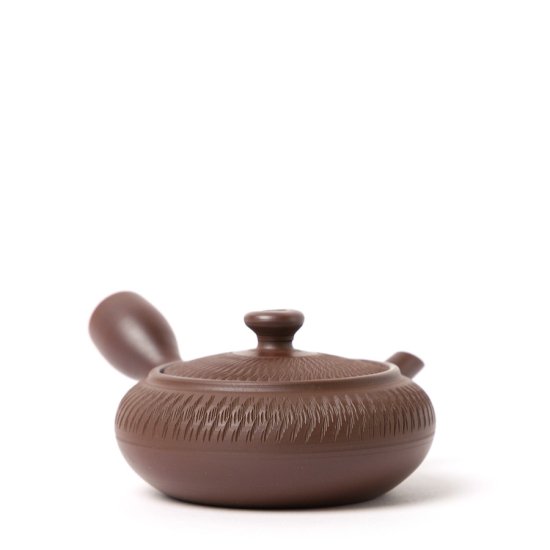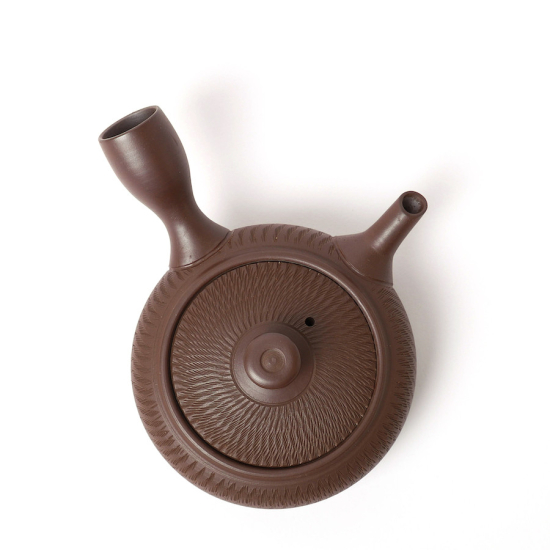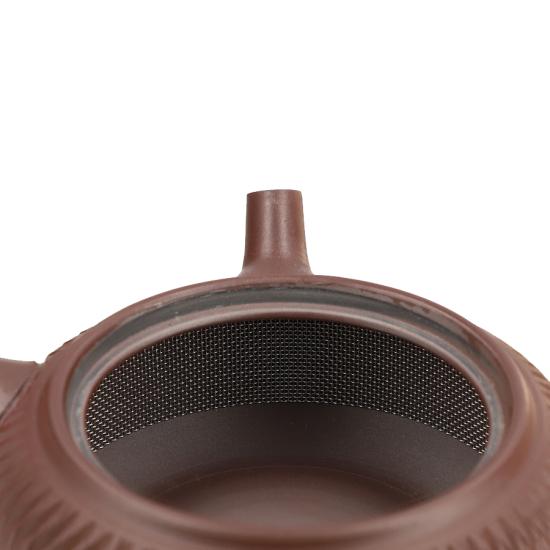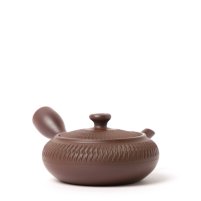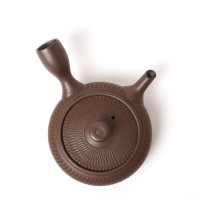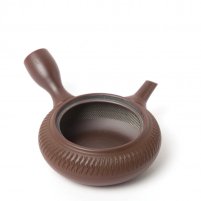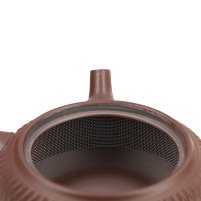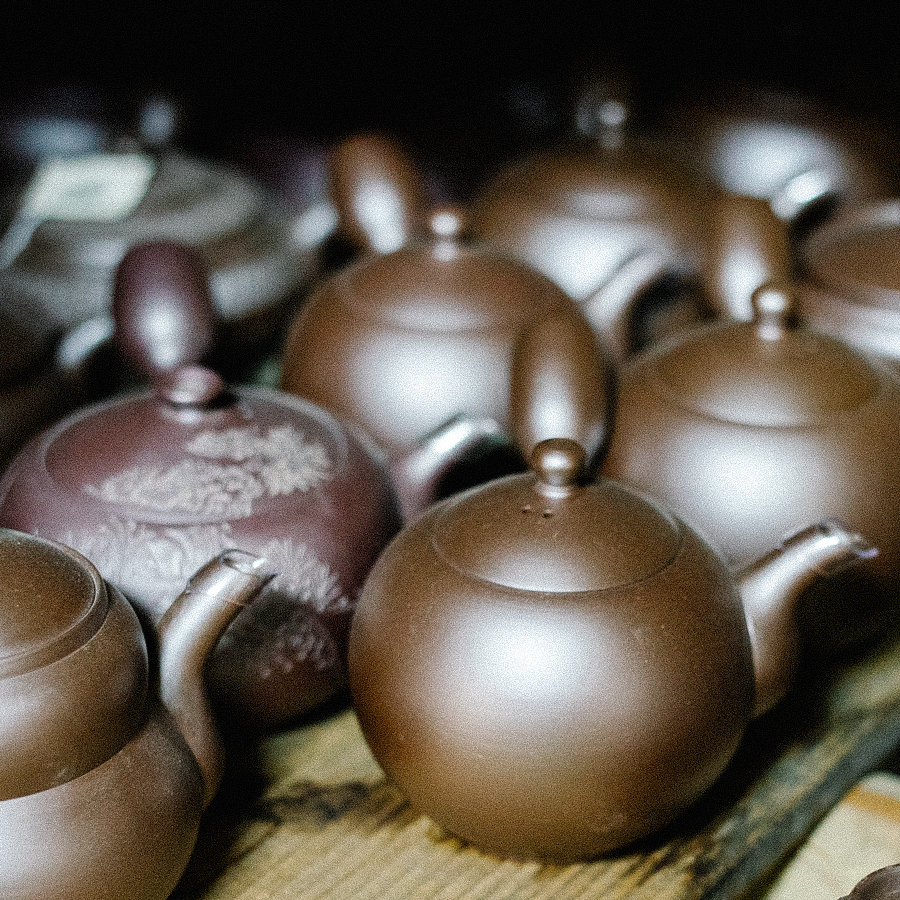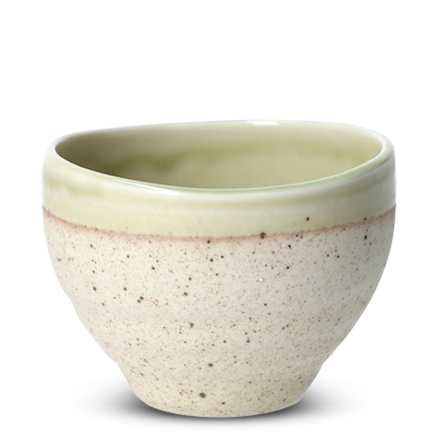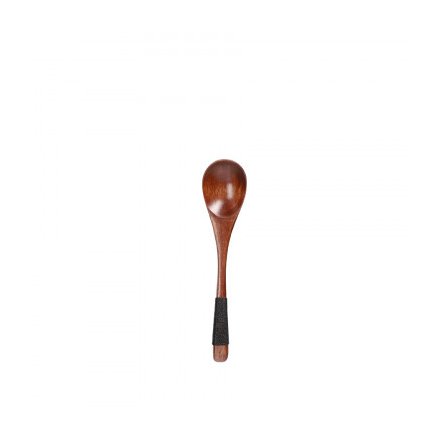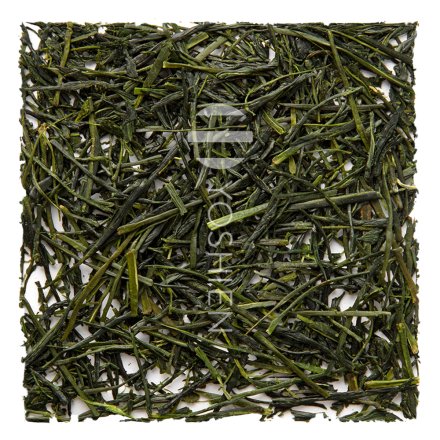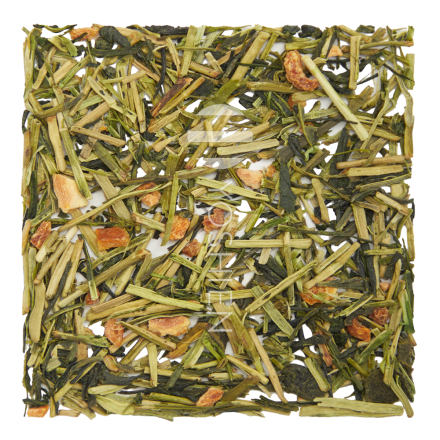Shidei banko will quickly develop a patina and become more glossy with use. It is natural that fingerprints will stand out on the surface in the first few months but these will begin to subside as the surface starts to develop a deep lustre. When cleaning, only use water and a soft cloth, then leave to air dry naturally. Do not use detergents or put in the dishwasher. Hard water may cause limescale deposits to develop, in which case rinse with soft bottled water, then wipe with a soft cloth.
Banko Kyusu
Hiramaru Biri 平丸ビリ
Studio Tozan
SKU
4089
Adorned with a meticulously incised biri pattern, this charming flat teapot is handcrafted by the renowned Tōzan kiln, who have been making banko wares in Yokkaichi for five generations. The Hiramaru-biru is a perfect everyday or entry-level kyusu that brews enough green tea for two.
| Type | Side-handle Banko-yaki kyusu |
| Origin | Yokkaichi, Mie Prefecture, Japan |
| Maker | Tōzan |
| Volume | 160ml |
| Dimensions | Ø10.2 x 4cm |
| Weight | 191g |
| Material | Ceramic |
| Decoration | Biri/Tobikanna |
| Finish | Unglazed (yakishime) |
| Manufacture | Assembled and decorated by hand |
| Strainer | Fixed stainless steel strainer at spout |
| Artist's Stamp | On base |
| Packaging | Box |
In stock



